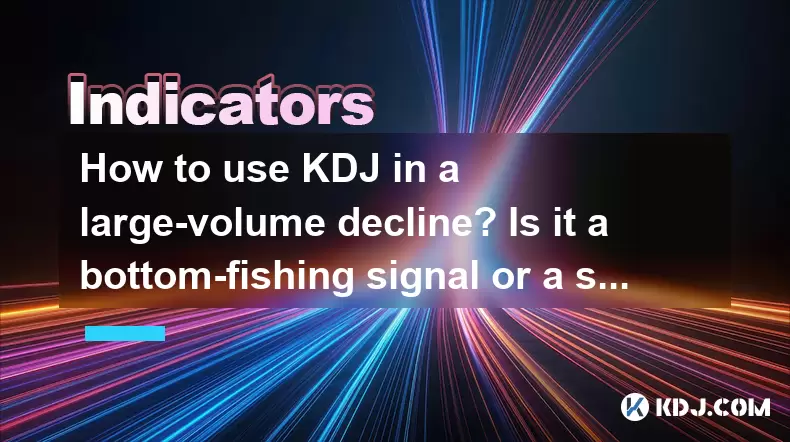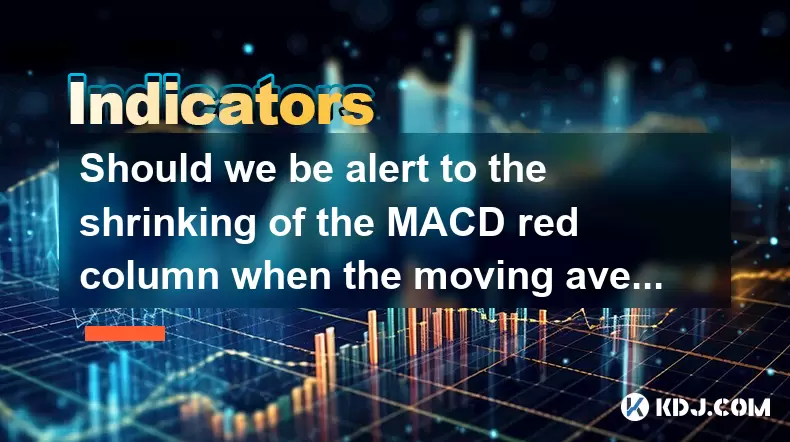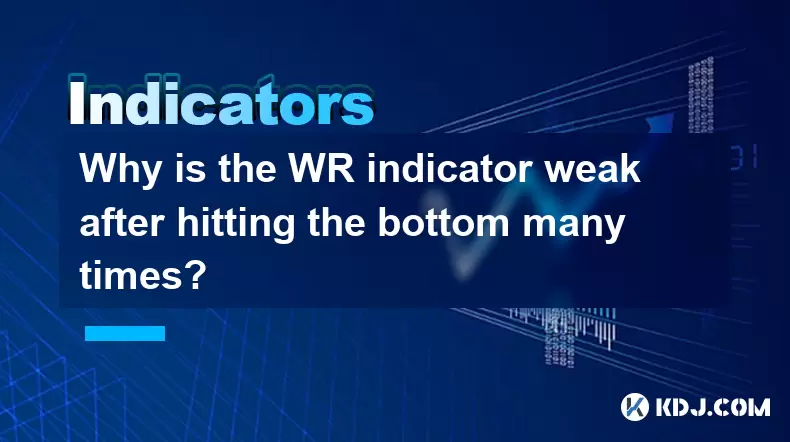-
 Bitcoin
Bitcoin $101,898.5005
-0.75% -
 Ethereum
Ethereum $2,258.1125
-1.07% -
 Tether USDt
Tether USDt $1.0004
0.01% -
 XRP
XRP $2.0178
-2.93% -
 BNB
BNB $624.0243
-1.53% -
 Solana
Solana $134.3298
-0.90% -
 USDC
USDC $0.9999
0.01% -
 TRON
TRON $0.2675
-2.05% -
 Dogecoin
Dogecoin $0.1538
-1.96% -
 Cardano
Cardano $0.5482
-1.11% -
 Hyperliquid
Hyperliquid $35.5636
5.45% -
 Bitcoin Cash
Bitcoin Cash $453.4902
-1.66% -
 Sui
Sui $2.5134
-2.97% -
 UNUS SED LEO
UNUS SED LEO $9.1292
1.77% -
 Chainlink
Chainlink $11.8457
-1.60% -
 Stellar
Stellar $0.2312
-2.73% -
 Avalanche
Avalanche $16.9721
0.29% -
 Toncoin
Toncoin $2.7549
-3.82% -
 Shiba Inu
Shiba Inu $0.0...01081
-1.10% -
 Litecoin
Litecoin $80.8250
-0.71% -
 Hedera
Hedera $0.1374
0.21% -
 Monero
Monero $305.4827
-2.36% -
 Ethena USDe
Ethena USDe $1.0006
0.00% -
 Dai
Dai $1.0000
-0.01% -
 Polkadot
Polkadot $3.2085
-3.12% -
 Bitget Token
Bitget Token $4.0845
-3.13% -
 Uniswap
Uniswap $6.3353
-1.63% -
 Pi
Pi $0.5085
-0.70% -
 Pepe
Pepe $0.0...08913
-3.82% -
 Aave
Aave $232.7090
-0.58%
How to use KDJ in a large-volume decline? Is it a bottom-fishing signal or a stop-loss signal?
During large-volume declines, use KDJ to spot bottom-fishing opportunities when lines drop below 20 and show a bullish crossover, but set stop-losses if bearish signals persist.
May 23, 2025 at 10:42 am

How to Use KDJ in a Large-Volume Decline? Is It a Bottom-Fishing Signal or a Stop-Loss Signal?
The KDJ indicator is a popular technical analysis tool used by traders in the cryptocurrency market to identify potential buy and sell signals. It is particularly useful during periods of significant volume declines, as it can help traders determine whether a price drop is a buying opportunity or a sign to exit their positions. In this article, we will explore how to use the KDJ indicator effectively during large-volume declines and discuss whether it should be interpreted as a bottom-fishing signal or a stop-loss signal.
Understanding the KDJ Indicator
The KDJ indicator is a momentum oscillator that combines elements of the stochastic oscillator with a moving average. It consists of three lines: the K line, the D line, and the J line. The K and D lines are derived from the stochastic oscillator, while the J line is a more sensitive measure that is calculated using the K and D lines.
- K Line: The K line is the fastest line and represents the current market momentum.
- D Line: The D line is a moving average of the K line and is used to smooth out the K line's fluctuations.
- J Line: The J line is calculated as
J = 3D - 2Kand is used to identify overbought and oversold conditions more quickly than the K and D lines alone.
Identifying Large-Volume Declines
A large-volume decline in the cryptocurrency market is characterized by a significant drop in price accompanied by a substantial increase in trading volume. This often indicates a shift in market sentiment and can be a critical point for traders to assess their positions.
To identify a large-volume decline, traders should:
- Monitor the trading volume on their chosen cryptocurrency exchange.
- Look for a sudden spike in volume that coincides with a sharp price drop.
- Use technical analysis tools, such as volume indicators, to confirm the increase in trading activity.
Using KDJ During Large-Volume Declines
When a large-volume decline occurs, the KDJ indicator can provide valuable insights into the market's direction. Traders should pay close attention to the following aspects of the KDJ indicator:
- Overbought and Oversold Levels: The KDJ indicator typically uses levels of 80 and 20 to identify overbought and oversold conditions, respectively. During a large-volume decline, if the KDJ lines fall below 20, it may indicate that the market is oversold.
- Crossing of K and D Lines: A bullish crossover occurs when the K line crosses above the D line, suggesting a potential reversal in the downtrend. Conversely, a bearish crossover occurs when the K line crosses below the D line, indicating a continuation of the downtrend.
- J Line Movement: The J line can provide early signals of a potential reversal. If the J line moves from below 20 to above 20, it may signal that the market is recovering from an oversold condition.
Is KDJ a Bottom-Fishing Signal During Large-Volume Declines?
Bottom-fishing refers to the strategy of buying assets that have experienced a significant price drop in the hope of a rebound. During a large-volume decline, the KDJ indicator can be used to identify potential bottom-fishing opportunities.
To use the KDJ indicator as a bottom-fishing signal during a large-volume decline, follow these steps:
- Monitor the KDJ lines for a drop below the 20 level, indicating an oversold condition.
- Look for a bullish crossover of the K line above the D line, suggesting a potential reversal.
- Confirm the signal with the J line moving from below 20 to above 20, indicating a recovery from an oversold state.
- Consider entering a long position when these conditions are met, but always use proper risk management techniques, such as setting stop-loss orders.
Is KDJ a Stop-Loss Signal During Large-Volume Declines?
A stop-loss signal is a trigger for exiting a position to limit potential losses. During a large-volume decline, the KDJ indicator can also be used to determine when to exit a position.
To use the KDJ indicator as a stop-loss signal during a large-volume decline, follow these steps:
- Monitor the KDJ lines for a drop below the 20 level, indicating an oversold condition.
- Look for a bearish crossover of the K line below the D line, suggesting a continuation of the downtrend.
- Confirm the signal with the J line remaining below 20, indicating persistent oversold conditions.
- Consider exiting a long position when these conditions are met, especially if the price continues to decline and the volume remains high.
Practical Example of Using KDJ During a Large-Volume Decline
Let's consider a practical example of how to use the KDJ indicator during a large-volume decline in the cryptocurrency market.
- Scenario: A trader is monitoring Bitcoin (BTC) on a popular exchange and notices a significant price drop accompanied by a spike in trading volume.
- Step 1: The trader observes that the KDJ lines have dropped below the 20 level, indicating an oversold condition.
- Step 2: The trader watches for a bullish crossover of the K line above the D line, which occurs after the initial drop.
- Step 3: The trader confirms the signal by observing the J line moving from below 20 to above 20, suggesting a potential recovery.
- Step 4: The trader decides to enter a long position on BTC, setting a stop-loss order to manage risk.
In this scenario, the KDJ indicator provided a bottom-fishing signal during a large-volume decline, allowing the trader to potentially capitalize on a price rebound.
Frequently Asked Questions
Q1: Can the KDJ indicator be used in conjunction with other technical indicators during large-volume declines?
A1: Yes, the KDJ indicator can be used in combination with other technical indicators, such as the Relative Strength Index (RSI) or Moving Averages, to confirm signals and enhance trading decisions during large-volume declines.
Q2: How often should I check the KDJ indicator during a large-volume decline?
A2: It is recommended to check the KDJ indicator regularly, such as every few hours or at key trading sessions, to stay updated on market conditions and potential signals during a large-volume decline.
Q3: Are there any specific timeframes that work best with the KDJ indicator during large-volume declines?
A3: The effectiveness of the KDJ indicator can vary depending on the timeframe used. Shorter timeframes, such as 15-minute or 1-hour charts, may provide more timely signals during large-volume declines, while longer timeframes, such as 4-hour or daily charts, can offer more reliable signals for longer-term trends.
Q4: How can I adjust the KDJ settings to better suit large-volume declines?
A4: Adjusting the KDJ settings, such as the period length for the K and D lines, can help tailor the indicator to specific market conditions. During large-volume declines, traders may consider using shorter periods to capture more rapid changes in market momentum. Experimenting with different settings and backtesting can help find the optimal configuration for individual trading strategies.
Disclaimer:info@kdj.com
The information provided is not trading advice. kdj.com does not assume any responsibility for any investments made based on the information provided in this article. Cryptocurrencies are highly volatile and it is highly recommended that you invest with caution after thorough research!
If you believe that the content used on this website infringes your copyright, please contact us immediately (info@kdj.com) and we will delete it promptly.
- DOGE Recovery Amid US-Iran Tensions: A Market Rollercoaster
- 2025-06-23 20:45:13
- Fiserv, PayPal, and Stablecoins: A New Era of Interoperability?
- 2025-06-23 20:45:13
- Hacken Token's Wild Ride: Minting Exploit and the Cryptocurrency Crash
- 2025-06-23 21:05:12
- Dogecoin, Cloud Mining, and Blockchain: A Meme's Evolution
- 2025-06-23 21:25:12
- Layer 1 Turmoil: CEO Ousted Amidst Scam Allegations
- 2025-06-23 21:05:12
- Solana's Stumble: Price Crash and Network Exodus?
- 2025-06-23 21:25:12
Related knowledge

What is the significance of the gap formed by the gap opening not being filled within five days?
Jun 23,2025 at 09:42pm
Understanding Gaps in Cryptocurrency TradingIn the world of cryptocurrency trading, a gap refers to a situation where the price of an asset jumps from one level to another without any trading activity occurring between those two levels. This often happens over weekends or holidays when the market is closed, and significant news or events occur that impa...

Does the second golden cross of MACD above the zero axis represent the continuation of strength?
Jun 23,2025 at 08:21pm
Understanding the MACD IndicatorThe Moving Average Convergence Divergence (MACD) is a widely used technical analysis tool in cryptocurrency trading. It consists of three main components: the MACD line, the signal line, and the histogram. The MACD line is calculated by subtracting the 26-period Exponential Moving Average (EMA) from the 12-period EMA. The...

Is it effective when the DIF line suddenly crosses the zero axis when the volume is shrinking and the market is trading sideways?
Jun 23,2025 at 07:29pm
Understanding the DIF Line in Technical AnalysisThe DIF line, or the Difference Line, is a critical component of the MACD (Moving Average Convergence Divergence) indicator, widely used in technical analysis across cryptocurrency and traditional financial markets. It represents the difference between the 12-period EMA (Exponential Moving Average) and the...

Should we be alert to the shrinking of the MACD red column when the moving average is arranged in a bullish pattern?
Jun 23,2025 at 08:14pm
Understanding the MACD Red Column and Its SignificanceThe Moving Average Convergence Divergence (MACD) is a widely used technical indicator in cryptocurrency trading. It consists of three main components: the MACD line, the signal line, and the MACD histogram (the red column). The red column represents the difference between the MACD line and the signal...

Why is the WR indicator weak after hitting the bottom many times?
Jun 23,2025 at 07:56pm
Understanding the WR Indicator in Cryptocurrency TradingThe Williams %R (WR) indicator is a momentum oscillator used by traders to identify overbought and oversold levels in the market. It ranges from 0 to -100, with readings above -20 considered overbought and below -80 considered oversold. In the context of cryptocurrency trading, where volatility is ...

Is the shrinking cross star after the historical high a signal of topping?
Jun 23,2025 at 05:56pm
Understanding the Shrinking Cross Star PatternIn technical analysis, candlestick patterns are essential tools for traders to predict potential price movements. One such pattern is the shrinking cross star, which appears as a small-bodied candle with long upper and lower shadows, indicating indecision in the market. When this pattern forms after an asset...

What is the significance of the gap formed by the gap opening not being filled within five days?
Jun 23,2025 at 09:42pm
Understanding Gaps in Cryptocurrency TradingIn the world of cryptocurrency trading, a gap refers to a situation where the price of an asset jumps from one level to another without any trading activity occurring between those two levels. This often happens over weekends or holidays when the market is closed, and significant news or events occur that impa...

Does the second golden cross of MACD above the zero axis represent the continuation of strength?
Jun 23,2025 at 08:21pm
Understanding the MACD IndicatorThe Moving Average Convergence Divergence (MACD) is a widely used technical analysis tool in cryptocurrency trading. It consists of three main components: the MACD line, the signal line, and the histogram. The MACD line is calculated by subtracting the 26-period Exponential Moving Average (EMA) from the 12-period EMA. The...

Is it effective when the DIF line suddenly crosses the zero axis when the volume is shrinking and the market is trading sideways?
Jun 23,2025 at 07:29pm
Understanding the DIF Line in Technical AnalysisThe DIF line, or the Difference Line, is a critical component of the MACD (Moving Average Convergence Divergence) indicator, widely used in technical analysis across cryptocurrency and traditional financial markets. It represents the difference between the 12-period EMA (Exponential Moving Average) and the...

Should we be alert to the shrinking of the MACD red column when the moving average is arranged in a bullish pattern?
Jun 23,2025 at 08:14pm
Understanding the MACD Red Column and Its SignificanceThe Moving Average Convergence Divergence (MACD) is a widely used technical indicator in cryptocurrency trading. It consists of three main components: the MACD line, the signal line, and the MACD histogram (the red column). The red column represents the difference between the MACD line and the signal...

Why is the WR indicator weak after hitting the bottom many times?
Jun 23,2025 at 07:56pm
Understanding the WR Indicator in Cryptocurrency TradingThe Williams %R (WR) indicator is a momentum oscillator used by traders to identify overbought and oversold levels in the market. It ranges from 0 to -100, with readings above -20 considered overbought and below -80 considered oversold. In the context of cryptocurrency trading, where volatility is ...

Is the shrinking cross star after the historical high a signal of topping?
Jun 23,2025 at 05:56pm
Understanding the Shrinking Cross Star PatternIn technical analysis, candlestick patterns are essential tools for traders to predict potential price movements. One such pattern is the shrinking cross star, which appears as a small-bodied candle with long upper and lower shadows, indicating indecision in the market. When this pattern forms after an asset...
See all articles
























































































